Across the Pyrenees
Saint Jean is an ideal starting point for the Spanish part of the Way of St. James. The town has preserved its medieval character and offers the photographer wonderful motifs.
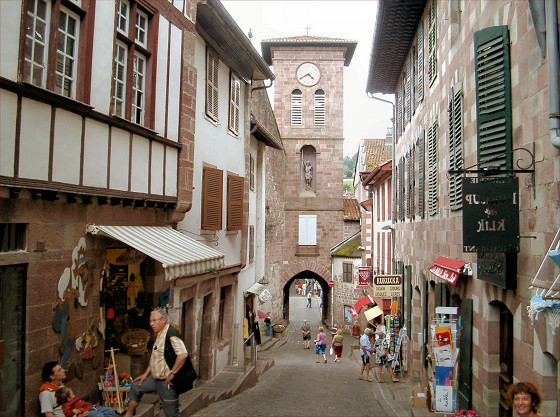
This is how idyllic Saint Jean Pied de Port presents itself as the starting point of our pilgrimage. In the pilgrims' office, here on the main road, we got the first stamp for the pilgrim's passport.
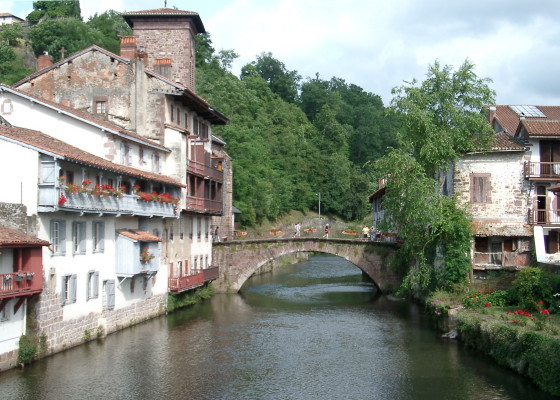
The pilgrimage route leads out of St. Jean over this beautiful bridge.
An asphalt road leads uphill to the first hostel.
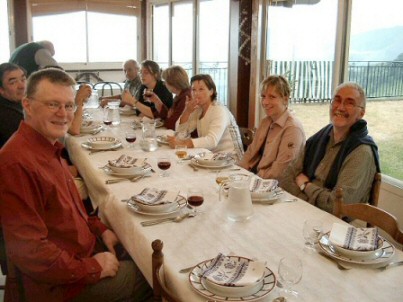
From the terrace of our first, extremely comfortable and cozy hostel (Albergue de Untto) we look down to Saint Jean.
We have dined there wonderfully and spent the night comfortably.
We met other pilgrims and had interesting conversations about their and our motivations and intentions.

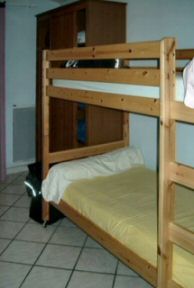
The next morning, we bike pilgrims first had to return to the valley. The pilgrim path would be too difficult for our touring bikes. Down on the road D933 it went at first briskly forward. Quickly the border to Spain was crossed and from now on it went steadily uphill. After two hours of hard leg work, the Ibaneta Pass was reached.
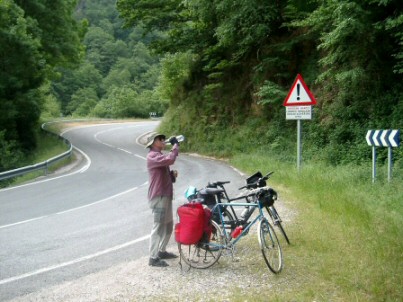
Short rest during the ascent to the 1057 m high Ibaneta Pass. St. Jacob was merciful to us and there was a pleasant temperature of 17 degrees. Unfortunately, I have no other pictures of the very beautiful ascent with the many serpentines, I was much too busy with myself. At some point Hans left in front and I fell further and further behind. Then Italian bicycle pilgrims overtook me. I could keep up with them. Finally the big moment came, the pass came in sight. With the goal in sight, the last meters were easier. Hans was already up there long before me and was waiting for me.

I was a little proud when I stood up there on the top of the pass. Here a view back towards France.
The short downhill ride to the monastery of Roncesvalles was a pure pleasure.

Shortly after the pass we visited the monastery, founded in the 12th century as a pilgrim hospital. Here I met traces of Charlemagne and the hero Roland from the 9th century.

Entrance to the monastery
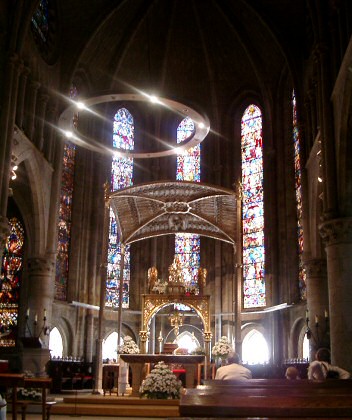
Monastery church of Roncesvalles 'Real Colegiata'
The Mother of God is venerated here. The statue of the Madonna is made of cedar wood and decorated with silver and precious stones.
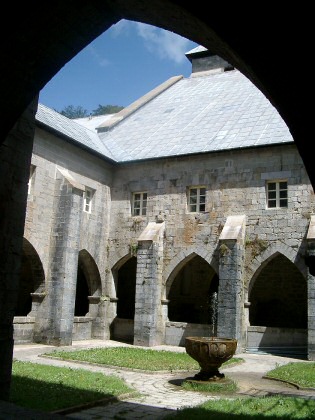
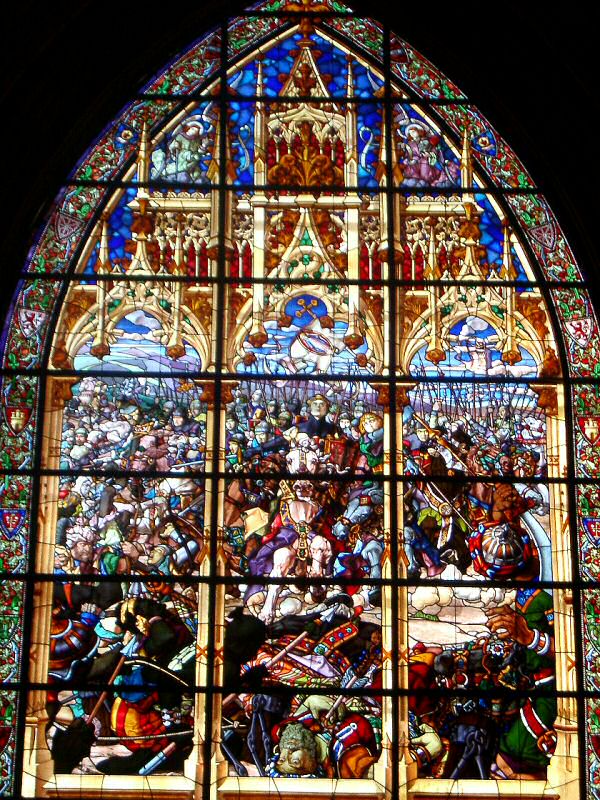
In the chapter house of the cloister is this magnificent window.
![]() Click
to enlarge!
Click
to enlarge!
Scene from the battle of Navas de Tolosa in 1212. Sancho VII is victorious over the Islamic fighters.
After stopping in Roncesvalles, which is steeped in history, we headed back downhill.
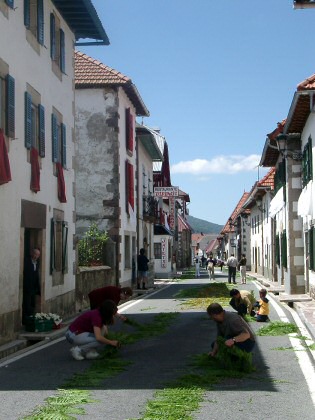
Here the street is just decorated for a Marian festival. The wind has blown the plants again and again. We drove through carefully.
Before Pamplona, there were two more smaller but equally strenuous passes to conquer, which I have not documented here.
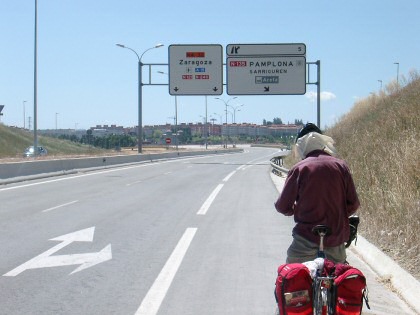
Entrance Pamplona. Here you can see that not everything always looks so romantic for the bike pilgrim.
There are no bike lanes in Spain.

In the late afternoon we reach Pamplona and drive through the alleys of the city beloved by Hemingway.
Typical for the cityscape are the balconies.

Here we are in the heart of Pamplona, the Placa del Castillo.

Pamplona City Hall with its Baroque fašade. Allegorical figures of Hercules form the foundations. The San Fermin festival opens from the balcony every 6th July. The running of the bulls (encierro) through the streets of Pamplona is well known.
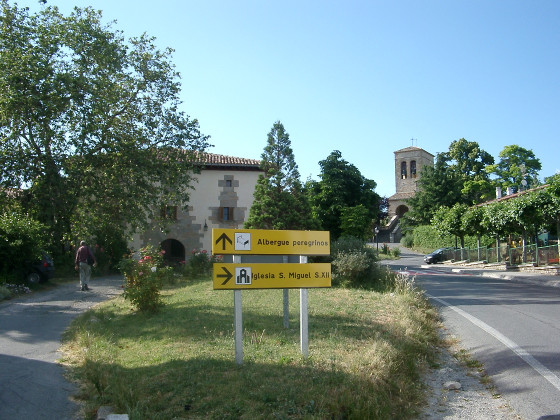
The hostel listed in the guidebook (St÷ppel: Der Jakobsweg) had long since ceased to exist. After painstakingly phoning around, we found a pleasant hostel 4 km outside Pamplona in Cizur Menor.
The pilgrims' mass was held in a beautiful Romanesque church. The extensive 4-course pilgrims' menu with the accompanying wine was served in the pizzeria.
While talking to other pilgrims in the evening, the foot pilgrims were amazed at how far we had come in a single day. It took them a whole week to cover this distance.
Photos: Gerhard Eichinger

